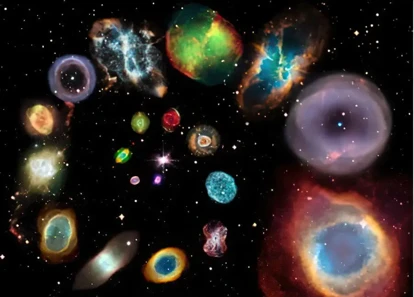Unleashing the Enigma Behind Planetary Alignments
Have you ever looked up at the night sky and wondered about the cosmic dance of the planets? Planetary alignments have captivated astronomers, astrologers, and space enthusiasts alike for centuries. These intriguing events, where celestial bodies align in a symphony of cosmic harmony, continue to mystify and inspire. In this article, we embark on a journey to uncover the secrets behind planetary alignments. With a blend of scientific exploration, historical significance, and space exploration’s role, we aim to shed light on these enigmatic celestial phenomena. Prepare to delve into the wonders of the universe as we explore the mysteries concealed within the art of planetary alignments.
Contents
- What are Planetary Alignments?
- The Science Behind Planetary Alignments
- Effects of Planetary Alignments
- Unusual Planetary Alignments
- The Role of Planetary Alignments in Space Exploration
- Conclusion
-
Frequently Asked Questions
- 1. How often do planetary alignments occur?
- 2. Can you observe planetary alignments without a telescope?
- 3. Do planetary alignments have any effect on Earth’s tides?
- 4. Are there any dangers associated with planetary alignments?
- 5. Can planetary alignments be predicted in advance?
- 6. Do planetary alignments have any impact on astrology?
- 7. Can planetary alignments cause earthquakes or natural disasters?
- 8. Are there any famous historical events associated with planetary alignments?
- 9. Have any space missions taken advantage of planetary alignments?
- 10. Can planetary alignments help in discovering new exoplanets?
- References
-
Frequently Asked Questions
- FAQs about Planetary Alignments
- 1. How often do planetary alignments occur?
- 2. Can planetary alignments affect Earth’s weather?
- 3. Do planetary alignments have any impact on human behavior?
- 4. Are there any health effects associated with planetary alignments?
- 5. Can planetary alignments be predicted in advance?
- 6. Are all planetary alignments visible from Earth?
- 7. Can planetary alignments cause earthquakes or other natural disasters?
- 8. Are there any superstitions or myths associated with planetary alignments?
- 9. Is there any practical application for studying planetary alignments?
- 10. Can I observe a planetary alignment with the naked eye?
- References
- Read More
What are Planetary Alignments?
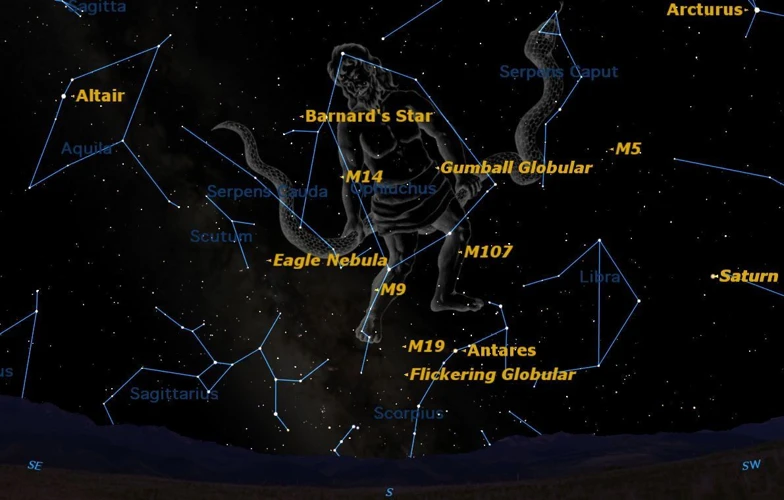
Planetary alignments refer to the phenomenon where multiple celestial bodies, such as planets, moons, and even asteroids, appear in a straight line or a specific geometric arrangement in space. These alignments occur when the planets align along their respective orbits and can be observed from the vantage point of Earth. It is a captivating sight that showcases the intricate patterns and gravitational interactions within our solar system.
There are different types of planetary alignments based on the configuration and positions of the celestial bodies involved. The most common type is the conjunction, where two or more planets appear close together in the sky. Opposition occurs when two planets are on opposite sides of the Sun as observed from Earth. Quadrature is a configuration where the planets are at right angles to each other. Grand Trine alignment involves three planets forming an equilateral triangle, providing a harmonious and stable energy. These planetary alignments have different astrological interpretations and significance.
Throughout history, planetary alignments have held great significance in various cultures and belief systems. Ancient civilizations, such as the Mayans and Egyptians, closely observed the alignments and associated them with prophecies, religious ceremonies, and the timing of important events. Astrologers believe that planetary alignments can impact human behavior, influencing emotions, relationships, and overall life experiences. While scientific understanding has provided more insights, the historical significance of planetary alignments continues to intrigue and fascinate people.
Now let’s move on to the scientific aspects of planetary alignments.
1. Definition of Planetary Alignments
Definition of Planetary Alignments
– Planetary alignments refer to the phenomenon where celestial bodies, such as planets, moons, and asteroids, appear in a straight line or specific geometric arrangement in space.
– These alignments occur when the planets align along their respective orbits and can be observed from the vantage point of Earth.
– It is important to note that although the term “planetary” is used, other celestial objects can also be involved in these alignments.
– In a planetary alignment, the celestial bodies may align either horizontally (along the same plane) or vertically (above or below one another).
– These alignments can be temporary, lasting only for a brief period, while others may be more long-lasting, depending on the orbital cycles of the planets involved.
– Planetary alignments can be calculated and predicted using sophisticated astronomical models and data.
– These alignments provide astronomers with valuable opportunities to study gravitational forces, planetary interactions, and other celestial phenomena.
– It is worth mentioning that planetary alignments are different from constellations, which are patterns formed by stars as seen from Earth, and from other celestial events such as meteor showers or the movements of asteroids and comets.
– By understanding the definition of planetary alignments, we can now explore the various types and the scientific basis behind these cosmic events.
2. Types of Planetary Alignments
Planetary alignments come in various forms, each with its unique configuration and visual impact. Let’s explore some of the most intriguing types of planetary alignments:
1. Conjunction: A conjunction occurs when two or more celestial bodies appear close together in the sky from our vantage point on Earth. It gives the illusion of planets merging or overlapping, creating a mesmerizing celestial spectacle. Conjunctions can occur between any combination of planets, as well as between planets and the Moon or bright stars.
2. Opposition: Opposition refers to the alignment of two celestial bodies on opposite sides of the Sun as observed from Earth. This alignment usually occurs when planets reach their maximum distance from the Sun. Opposition is especially notable when it involves planets like Mars, as they appear particularly bright and distinct in the night sky.
3. Quadrature: Quadrature alignments occur when two celestial bodies are positioned at a right angle to each other, forming a 90-degree angle as seen from Earth. This alignment creates a geometric arrangement, adding a sense of symmetry to the night sky. Quadrature alignment is often observed between the Moon and the Sun or between two planets.
4. Grand Trine: The Grand Trine alignment involves three celestial bodies forming an equilateral triangle in the sky. This rare alignment is associated with balance, harmony, and positive energy. Grand Trines are considered highly auspicious in astrology and are believed to bring fortunate opportunities and favorable outcomes.
5. Planetary Alignments with the Moon: The Moon often plays a role in planetary alignments, adding an extra dimension to the alignment’s visual appeal. The Moon may pass by or align with planets, creating stunning conjunctions or oppositions that are easily visible with the naked eye.
It’s important to note that these types of planetary alignments can vary in frequency and visibility. While some alignments occur frequently, others may be once-in-a-lifetime events. Regardless of their rarity, these alignments never fail to capture the imagination of stargazers and astronomers alike.
3. Historical Significance of Planetary Alignments
Throughout history, planetary alignments have held a significant place in various cultures and belief systems across the globe. The alignment of celestial bodies has been seen as a momentous event, often associated with spiritual, religious, and astrological interpretations. Here are a few examples of the historical significance of planetary alignments:
1. Mayan Civilization: The ancient Mayans were skilled astronomers who considered planetary alignments as divine messages and omens. They believed that the alignment of planets and stars influenced the fate of individuals and the destiny of their civilization. Mayan temples and pyramids were constructed in alignment with specific celestial events, such as the alignment of Venus with other planets.
2. Egyptian Civilization: The ancient Egyptians closely observed celestial phenomena, including planetary alignments. They associated these alignments with their gods and goddesses, attributing them with power and influence over different aspects of life. For instance, the alignment of the planets was believed to have a direct impact on the Nile floods, which were vital for agricultural prosperity.
3. Chinese Culture: In Chinese astrology, planetary alignments played a crucial role in determining the fortunes of individuals and the destiny of the nation. The alignment of planets, particularly during eclipses and comets, was seen as a sign of cosmic balance and the interplay between yin and yang forces.
4. European Renaissance: During the Renaissance period, astronomers like Johannes Kepler and Tycho Brahe made significant advancements in studying planetary alignments. Their observations and calculations laid the foundation for modern astronomy, enabling a more scientific understanding of celestial motion and planetary alignments.
These examples illustrate the deep-rooted historical significance of planetary alignments and their impact on various cultures and civilizations. While our understanding of these alignments has evolved over time, their historical importance continues to be a source of awe and intrigue. The next sections will delve into the scientific principles underlying planetary alignments, shedding further light on this cosmic phenomenon.
The Science Behind Planetary Alignments
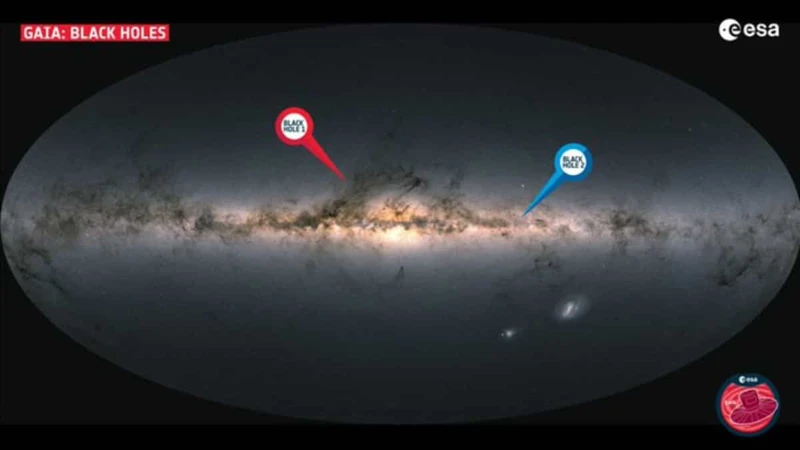
The alignment of planets in space is not merely a result of chance or cosmic coincidence. It is governed by the fundamental principles of gravitational forces and orbital mechanics. Understanding these scientific concepts helps unravel the mysteries behind planetary alignments.
1. Gravitational Forces: Gravity plays a pivotal role in the alignment of celestial bodies. Each planet exerts a gravitational force on the others, pulling them towards it. This gravitational attraction causes the planets to move along their elliptical orbits around the Sun. When the planets align, it is a result of the delicate balance between their gravitational forces and orbital paths. This gravitational dance is the foundation for the captivating choreography of planetary alignments.
2. Orbital Mechanics: The study of orbital mechanics provides further insight into planetary alignments. Planets follow elliptical orbits around the Sun, and their rotational speeds and distances affect their alignment. When planets reach a certain position in their orbits, their relative positions in the sky align, creating stunning visual displays. These alignments can be predicted with precision and are often used by astronomers and space agencies to plan observations and space missions.
By studying the scientific principles behind planetary alignments, astronomers and scientists can better comprehend the intricacies of the cosmos. It allows them to make accurate predictions about future alignments and understand the underlying mechanisms governing celestial movements.
Next, we’ll explore the effects of planetary alignments, including their astrological interpretations and impacts on Earth and its inhabitants.
1. Gravitational Forces
Gravitational Forces:
One of the key scientific principles that explain planetary alignments is the role of gravitational forces. Gravity is the fundamental force that governs the motion of celestial bodies in the universe. Each planet, star, and moon exerts a gravitational pull on the surrounding objects, including each other. As planets align, their gravitational forces interact, resulting in a delicate dance of attraction and repulsion.
The gravitational force between two celestial bodies is directly proportional to their masses and inversely proportional to the square of the distance between them. When planets come into alignment, their combined gravitational forces can influence their orbits and alter their paths. This interaction can create a temporary synchronization or perturbation in their movements.
For example, during a conjunction, when two or more planets align closely, their gravitational forces can cause slight changes in their velocities and orbit eccentricities. This gravitational interplay can also affect the tilt and rotation of the planets, causing subtle variations in their axial orientations.
Gravitational forces play a crucial role in maintaining the stability and harmony of our solar system. They help regulate the orbital dynamics, ensuring that the planets maintain their respective distances from the Sun and remain in relatively stable orbits. Without these gravitational forces, the planets would spiral out of control or collide with each other, disrupting the delicate balance of the solar system.
The understanding of gravitational forces and their influence on planetary alignments is a cornerstone of modern astronomy. It allows scientists to predict and calculate the occurrence of these celestial events accurately. The study of gravitational interactions helps unravel the mysteries of our universe, providing valuable insights into the motion and behavior of celestial bodies during planetary alignments.
2. Orbital Mechanics
Orbital mechanics plays a crucial role in understanding the science behind planetary alignments. It involves studying the motion of celestial bodies in their respective orbits around the Sun. The gravitational pull exerted by the Sun on the planets, combined with their own velocities and inertia, determines their paths and positions in space.
Each planet in our solar system follows a specific orbit, characterized by its shape, size, and orientation. The orbits are generally elliptical, with the Sun positioned at one of the foci. However, due to the gravitational influence of other celestial bodies, these orbits may deviate slightly from perfect ellipses.
When planets align, it is a result of their combined orbital motion and the timing of their positions in their respective orbits. As the planets travel along their paths, their relative positions change, and occasionally, they align with each other from the perspective of Earth.
This alignment occurs due to the synchronization of the planets’ orbital periods. It is important to note that planetary alignments are temporary and constantly evolving, as the planets continue their celestial dance around the Sun. The complex interplay between gravitational forces and orbital mechanics gives rise to these fascinating alignments, shaping the intricate patterns we observe in the night sky.
Understanding the orbital mechanics behind planetary alignments provides valuable insights into the mechanics of our solar system and the dynamics of celestial bodies. It enables scientists and astronomers to accurately predict future alignments and analyze their effects on space exploration, astrological interpretations, and the overall understanding of our cosmos.
Now, let’s explore the effects of planetary alignments in more detail.
Effects of Planetary Alignments
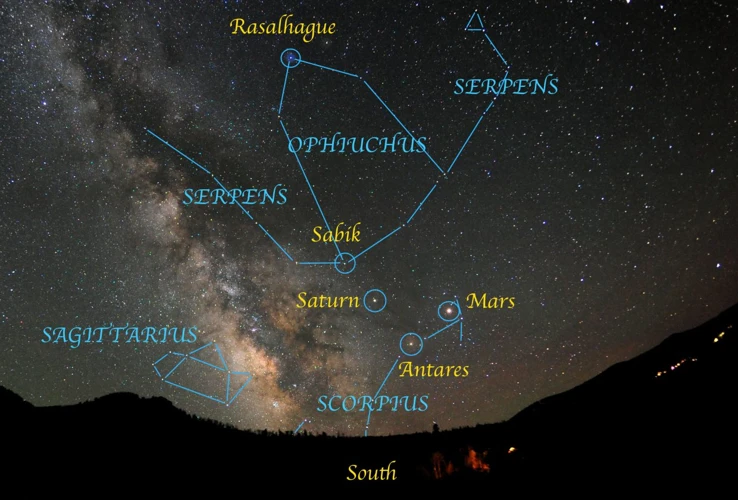
Planetary alignments have sparked curiosity and debate regarding their potential effects on various aspects of life. While the scientific community may be skeptical about any direct causation, there are a few key areas where the effects of planetary alignments have been explored and discussed.
1. Astrological Interpretations: Astrologers believe that planetary alignments can influence human behavior and personality traits. Each alignment is associated with particular energies and characteristics, which astrologers interpret to provide insights into individual lives and collective events. For example, a grand trine alignment may be associated with stability and harmony, while a conjunction of challenging planets could represent a period of potential tension or conflict.
2. Impact on Earth and its Inhabitants: The gravitational forces exerted by aligned celestial bodies may have subtle influences on Earth and its inhabitants. Some theories suggest that planetary alignments could affect tides, seismic activity, and weather patterns. While the magnitude of these effects may be negligible, the alignment of the Moon and the Sun during a new or full moon does have a noticeable impact on ocean tides.
It’s important to note that scientific evidence for the specific effects of planetary alignments is limited. The gravitational forces between distant planets are relatively small compared to the pull of the Sun and the Moon. While planetary alignments may have symbolic or psychological significance, their physical effects on Earth are likely to be minimal.
Next, let’s explore some of the unusual and rare planetary alignments that have caught the attention of astronomers and space enthusiasts.
1. Astrological Interpretations
Unusual Planetary Alignments
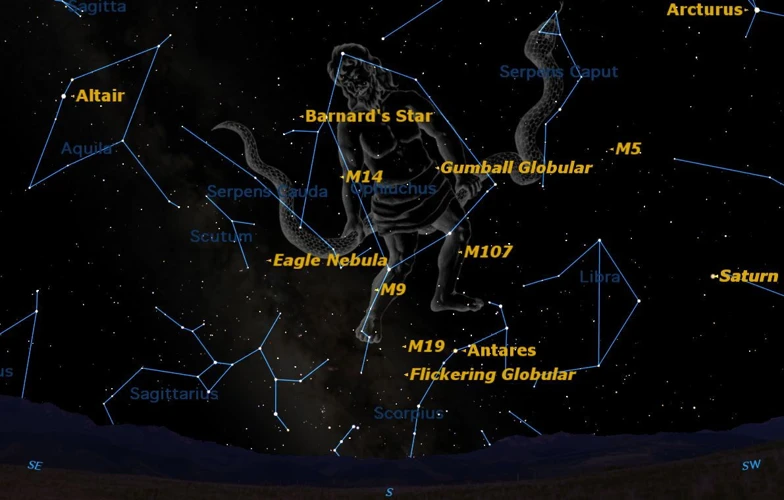
Unusual planetary alignments are rare occurrences that deviate from the typical configurations we observe in the night sky. These alignments can involve multiple planets, moons, or even other celestial objects, creating captivating celestial displays. While planetary alignments themselves are already fascinating, the unusual ones add an extra layer of intrigue and excitement for space enthusiasts.
One example of an unusual planetary alignment is the planetary conjunction known as the “Great Conjunction.” This alignment happens when the gas giants Jupiter and Saturn come into close proximity in the sky. Although this event occurs roughly every 20 years, some Great Conjunctions are more exceptional than others. For instance, the Great Conjunction of December 21, 2020, was particularly notable, as Jupiter and Saturn appeared closer together than they had in almost 400 years. These rare occurrences provide a unique opportunity to witness the grandeur of our solar system and marvel at the precision of celestial mechanics.
Another intriguing phenomenon is the alignment of planets with other celestial events, such as meteor showers or eclipses. These alignments create unforgettable cosmic spectacles. For example, when a meteor shower coincides with a planetary alignment, the combination of shooting stars streaking across the sky and planets in perfect alignment can create an awe-inspiring celestial show. Observing such events can be a once-in-a-lifetime experience and an excellent opportunity for both professional and amateur astronomers to study the interactions between celestial bodies.
In addition to these rare alignments, there have been instances of planetary alignment events that were historically significant. One notable example is the alignment of all known planets in 561 BC. This unique alignment was recorded by ancient astronomers and held cultural and religious significance in various civilizations. These events, although relatively rare, leave a lasting impact and inspire curiosity about the vastness and interconnectedness of our solar system.
From rare planetary conjunctions to alignments with other celestial events and historically significant configurations, unusual planetary alignments continue to captivate and fascinate those who gaze at the night sky. These extraordinary moments provide opportunities to appreciate the harmonious dance of celestial bodies and remind us of the wonders that await us beyond our home planet.
1. Rare Planetary Alignments
Rare planetary alignments are celestial events that occur less frequently and often capture the attention of sky gazers and astronomers worldwide. These alignments not only showcase the beauty of our solar system but also provide unique opportunities for scientific study and observation. Here are some examples of rare planetary alignments:
1. Planetary Conjunctions: A planetary conjunction happens when two or more planets align exceptionally close to each other in the sky. One notable example of a rare planetary conjunction occurred in December 2020 when Jupiter and Saturn appeared extremely close, creating what is popularly known as the “Great Conjunction” or the “Christmas Star.” Such close alignments are rare and occur approximately every 20 years.
2. Opposition of Superior Planets: Superior planets, namely Mars, Jupiter, and Saturn, have elongated orbits compared to Earth’s orbit. During their opposition, they appear in the sky opposite the Sun, providing an excellent opportunity to observe and study these planets. Oppositions of Mars are particularly significant as they occur roughly every 2 years and 2 months when Earth and Mars are on the same side of the Sun.
3. Transits: Transits occur when a planet passes in front of a star as observed from Earth. Perhaps the most famous transit is the Venus transit, where Venus moves across the face of the Sun. Venus transits occur in pairs, separated by eight years, and with more than a century between each pair.
4. Grand Alignment of Outer Planets: On rare occasions, the outer gas giants, namely Jupiter, Saturn, Uranus, and Neptune, can align in a straight line, called a grand alignment. This event last occurred in 1982 and will not happen again until the 22nd century.
These rare planetary alignments provide valuable opportunities for scientists and astronomers to study the gravitational and orbital dynamics of celestial bodies in our solar system. They also inspire wonder and awe in stargazers worldwide, reminding us of the beauty and complexity of the universe we inhabit.
2. Planetary Alignment Events
Planetary alignment events, where multiple planets align in a specific configuration, are rare and highly anticipated occurrences in the field of astronomy. These events provide astronomers and space enthusiasts with a unique opportunity to witness the alignment of celestial bodies in the night sky. Here are a few noteworthy planetary alignment events that have taken place in recent times:
1. Great Planetary Alignment of 2000: In May 2000, an extraordinary planetary alignment occurred, involving five planets – Mercury, Venus, Mars, Jupiter, and Saturn. These five planets appeared in the evening sky, aligning almost in a straight line from horizon to horizon. This rare event captured the attention of skywatchers worldwide and created a sense of awe and wonder.
2. Planetary Alignment of 2012: Another significant alignment took place in March 2012 when Jupiter, Venus, and the Moon formed a beautiful celestial triangle. This eye-catching event created a stunning spectacle for sky observers and photographers alike. It was a visual reminder of the dynamic and intricate celestial dance that occurs in our solar system.
3. Mars Opposition of 2018: While not a traditional alignment, oppositions are considered significant events in the planetary world. In July 2018, Mars reached opposition, which means it was directly opposite the Sun in Earth’s sky. This provides a close encounter with the red planet, making it brighter and easier to observe. Astronomers and space enthusiasts eagerly anticipated this event to witness Mars at its brightest and closest approach to Earth.
It is crucial to note that planetary alignment events can be predicted using advanced astronomical calculations and simulations. These events generate excitement and serve as opportunities for scientific research, public engagement, and celestial photography. Witnessing a planetary alignment event can be a truly awe-inspiring experience, allowing us to observe the grandeur and harmony of our solar system in action.
Now, let’s explore the role of planetary alignments in space exploration.
The Role of Planetary Alignments in Space Exploration
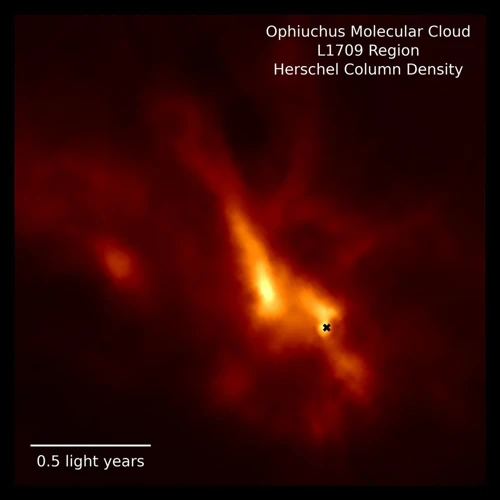
1. Navigational Assistance: Planetary alignments play a crucial role in space exploration by providing navigational assistance to spacecraft. When planning interplanetary missions, scientists and engineers take advantage of favorable alignments to minimize travel time and fuel consumption. By utilizing the gravitational pull of aligned planets, spacecraft can perform gravity-assist maneuvers, slingshotting around a planet to gain speed or adjust their trajectory. These alignments act as cosmic signposts, guiding spacecraft on their journey through the vastness of space.
2. Launch Windows: Planetary alignments also determine launch windows, which are specific time frames when it is most advantageous to launch a mission. Launching during a favorable alignment allows spacecraft to take advantage of the optimal trajectories and gravitational assists offered by the aligned planets. These launch windows can occur only once or a few times in a given time period, making them critical for mission planning. Engineers carefully calculate the alignment of planets to ensure successful launches, aiming for precise windows that maximize efficiency and mission success.
Understanding and utilizing planetary alignments are fundamental to the success of space missions. By leveraging the natural movements and positions of planets, scientists and engineers can navigate through space more efficiently and effectively. From providing navigational assistance to determining launch windows, planetary alignments contribute to the progress of space exploration, enabling us to delve deeper into the mysteries of the universe.
Planetary alignments are not only a breathtaking sight but also hold scientific and historical significance. They help us unravel the mysteries of the cosmos, influence astrological interpretations, and even assist us in our exploration of space. The more we learn about planetary alignments, the more we comprehend the intricate connections and forces that shape our solar system and beyond. So, let us continue to gaze up at the stars, appreciating the beauty and wonder of these celestial alignments.
Planetary alignments have played a crucial role in space exploration, providing navigational assistance for spacecraft and missions. When plotting a trajectory to reach distant planets or celestial bodies, space agencies leverage the gravitational forces and alignments between planets to optimize fuel efficiency and travel time.
One example of this is the concept of a gravity assist or slingshot maneuver. By carefully planning the trajectory of a spacecraft to align with the gravitational pull of a planet, engineers can utilize the planet’s gravity to gain speed or alter the spacecraft’s direction. This technique has been used in numerous missions, such as NASA’s Voyager spacecraft, which took advantage of planetary alignments to visit multiple planets within our solar system.
Additionally, the alignment of planets can assist in determining the optimal launch windows for space missions. These launch windows are specific time periods when the planets’ positions align favorably for interplanetary travel. By taking advantage of these alignments, missions can save significant amounts of fuel and time, as the spacecraft can utilize the planets’ gravity to slingshot towards its intended destination.
The utilization of planetary alignments for navigational assistance showcases the fascinating relationship between celestial bodies and the practical applications they offer for space exploration. It is a testament to humanity’s ability to harness the natural forces of the universe to chart our course among the stars.
Now, let’s explore another intriguing aspect of planetary alignments: their impact on Earth and its inhabitants.
2. Launch Windows
Launch windows play a crucial role in space exploration and are influenced by planetary alignments. A launch window refers to a specific time period during which a spacecraft can be launched from Earth to maximize fuel efficiency and minimize travel time. These windows are determined by the alignment of planets and their positions relative to Earth and the destination.
The gravitational pull exerted by planets can either assist or hinder spacecraft during launch and interplanetary travel. For example, a favorable planetary alignment can enable a spacecraft to utilize gravitational slingshots, also known as gravity assists, to increase its speed and conserve fuel. By carefully calculating the trajectories and alignments of various planets, space agencies can plan launches to take advantage of these gravitational assists, significantly reducing the overall mission duration and cost.
Conversely, unfavorable planetary alignments can make launching and interplanetary travel more challenging. The gravitational pulls of multiple planets may create complex trajectories and require additional fuel to overcome their effects. Space agencies must carefully analyze these alignments to determine the best launch windows and optimize mission success.
One notable example of planetary alignment influencing launch windows is the exploration of Mars. Launch opportunities to Mars occur every 26 months, when Earth and Mars align on the same side of the Sun. This alignment allows for a relatively short travel distance and lower energy requirements. If a spacecraft misses the launch window, it may have to wait several years for the next alignment, leading to delays in missions.
Launch windows are essential considerations in space exploration, and planetary alignments greatly influence their timing. By leveraging these alignments, space agencies can optimize fuel efficiency, reduce travel time, and increase the chances of mission success. The precise calculations and planning involved in determining launch windows highlight the significance of planetary alignments in the realm of space exploration.
Conclusion

Unraveling the Mysteries, Embracing the Marvels
In conclusion, planetary alignments are captivating celestial phenomena that have fascinated humanity for centuries. From their historical significance to the scientific understanding behind their occurrence, these alignments continue to spark curiosity and wonder. The science of planetary alignments demonstrates the influence of gravitational forces and orbital mechanics in shaping the patterns we observe. Meanwhile, astrological interpretations and beliefs surrounding planetary alignments add a layer of intrigue and contemplation, offering insights into how celestial events may impact human life. Additionally, the role of planetary alignments in space exploration, such as navigational assistance and launch windows, showcases their practical significance in our exploration of the cosmos. As we continue to uncover the mysteries of planetary alignments, we are reminded of the vastness and complexity of our universe, encouraging us to embrace the marvels that lie beyond our planet. So, next time you gaze up at the night sky, take a moment to ponder the celestial dance of the planets and the hidden wonders that await our exploration.
Frequently Asked Questions

1. How often do planetary alignments occur?
Planetary alignments occur relatively frequently in our solar system. The exact frequency depends on the specific type of alignment and the planets involved. Some alignments, like conjunctions, can occur multiple times a year, while others, such as grand trines, are rarer and might occur once in several years.
2. Can you observe planetary alignments without a telescope?
Yes, many planetary alignments are visible to the naked eye. Conjunctions, for example, can be seen without the need for a telescope. However, a telescope or binoculars can enhance the viewing experience by providing a closer look at the details of the planets.
3. Do planetary alignments have any effect on Earth’s tides?
While planetary alignments can create gravitational interactions, their influence on Earth’s tides is minimal compared to the primary influence of the Moon. The Moon’s gravitational pull is much stronger and has a more significant impact on the tides.
4. Are there any dangers associated with planetary alignments?
No, planetary alignments do not pose any direct dangers to Earth or its inhabitants. Though some may associate planetary alignments with catastrophic events, such beliefs are rooted in mythology and lack scientific evidence.
5. Can planetary alignments be predicted in advance?
Yes, planetary alignments can be predicted with precision using advanced mathematical models and computer simulations. Astronomers and scientists can calculate the positions of planets in the future, allowing for accurate predictions of alignments.
6. Do planetary alignments have any impact on astrology?
Yes, according to astrology, planetary alignments hold significance and are believed to influence different aspects of human life and behavior. Astrologers interpret the alignments based on the position of planets at the time of a person’s birth, considering their astrological charts.
7. Can planetary alignments cause earthquakes or natural disasters?
There is no scientific evidence linking planetary alignments to an increase in earthquakes or natural disasters. Earthquakes are primarily caused by tectonic activity and faults beneath the Earth’s surface.
8. Are there any famous historical events associated with planetary alignments?
While some historical events have been linked to planetary alignments through astrological interpretations, there is no concrete scientific evidence supporting such claims. It is important to differentiate between historical anecdotes and scientifically verified events.
9. Have any space missions taken advantage of planetary alignments?
Yes, space missions have utilized planetary alignments to their advantage. The concept of gravity assist, also known as a slingshot maneuver, involves using the gravitational pull of a planet to increase or redirect a spacecraft’s speed and trajectory, optimizing fuel efficiency and mission duration.
10. Can planetary alignments help in discovering new exoplanets?
Yes, planetary alignments can aid scientists in the discovery of exoplanets. The method known as gravitational microlensing relies on the gravitational effects of a planet or other celestial body causing a temporary brightening of a distant star, indicating the presence of an exoplanet.
References
Frequently Asked Questions

FAQs about Planetary Alignments
Here are some frequently asked questions about planetary alignments:
1. How often do planetary alignments occur?
Planetary alignments occur fairly regularly, although the specific frequency depends on the planets involved and their orbital periods. Some alignments may occur only once in several decades, while others can be seen more frequently.
2. Can planetary alignments affect Earth’s weather?
While there is ongoing research in this area, the scientific consensus is that planetary alignments do not directly impact Earth’s weather patterns. Weather on Earth is primarily influenced by factors such as atmospheric conditions and solar radiation.
3. Do planetary alignments have any impact on human behavior?
There is no scientific evidence to suggest that planetary alignments have a direct influence on human behavior. However, some individuals believe in astrology, which proposes that planetary alignments can have an influence on personality traits and interpersonal relationships.
4. Are there any health effects associated with planetary alignments?
There is no scientific evidence to support the claim that planetary alignments have any direct impact on human health. Medical conditions are primarily determined by factors such as genetics, lifestyle, and environmental factors.
5. Can planetary alignments be predicted in advance?
Yes, planetary alignments can be predicted with a high degree of accuracy using advanced astronomical software and calculations. Scientists and astronomers can determine the date and time of future planetary alignments based on the known orbital mechanics of the planets involved.
6. Are all planetary alignments visible from Earth?
No, not all planetary alignments are visible from Earth. Whether or not an alignment is visible depends on factors such as the positions of the planets in relation to the Sun and Earth, as well as the time of day and geographical location of the observer.
7. Can planetary alignments cause earthquakes or other natural disasters?
There is no scientific evidence to suggest that planetary alignments directly cause earthquakes or other natural disasters. Earthquakes are primarily the result of tectonic plate movements and geological processes.
8. Are there any superstitions or myths associated with planetary alignments?
Throughout history, there have been various superstitions and myths surrounding planetary alignments. Some cultures believed that planetary alignments signaled significant events or changes in fortune. However, these beliefs are not supported by scientific evidence.
9. Is there any practical application for studying planetary alignments?
Studying planetary alignments has practical applications in fields such as astronomy and space exploration. By understanding the mechanics of planetary alignments, scientists can better predict celestial events and plan missions to other planets.
10. Can I observe a planetary alignment with the naked eye?
Yes, some planetary alignments are visible to the naked eye. However, for a more detailed view and to observe rarer alignments, the use of telescopes or binoculars is recommended.

